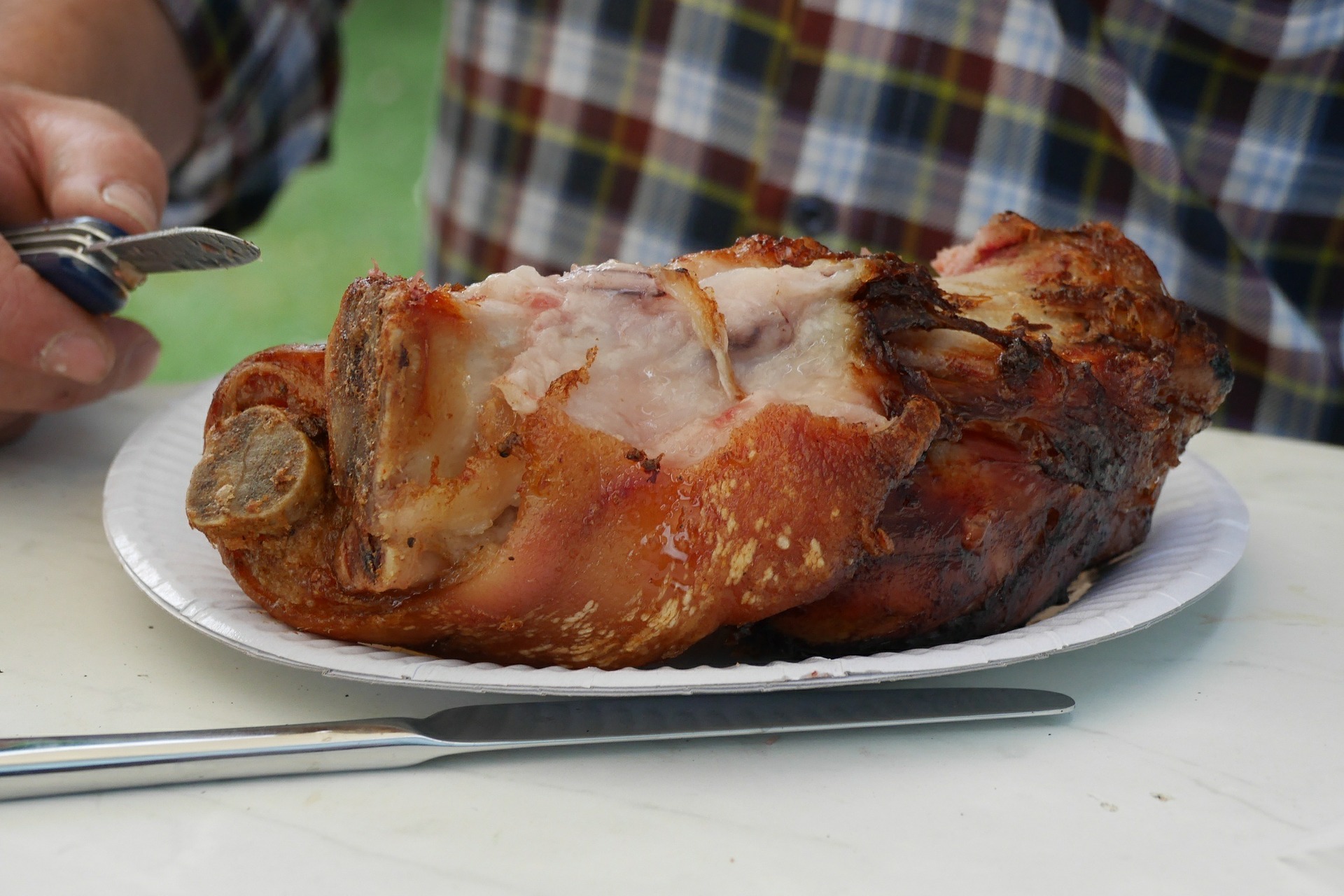Known as ‘the other white meat,’ pork is hailed as healthier than beef with similarities to chicken regarding its leanness. It is one of the oldest meat sources, consuming up to 38% of the world’s meat production, with domesticated pigs serving as an integral part of the human diet for thousands of years. Although its consumption is forbidden in certain religions and even outlawed in many Islamic countries, nutrition-wise it contains essential amino acids, necessary for post-surgical patients, bodybuilders, and those who need to repair muscles.

How Healthy Really is Pork?
Pork is the most commonly consumed red meat worldwide, and a high-quality dietary source. Pork comes with many health benefits being a great provider of protein, high levels of Vitamin B6, niacin, phosphorus, zinc, selenium, iron and Vitamin B-12, which are vital in maintaining a healthy body. Due to its fat content, it is much more easily preserved than other types of meat, with old traditions dating thousands of years before refrigeration, in which our ancestors would marinate the fresh pork before cooking, to tenderise and encourage more flavour. In addition, common preparation methods, such as smoking, salt curing, brining, and lacto-fermenting also kill off any parasites.
Pork can be a healthy part of any diet or lifestyle if selected carefully. For example, cuts of meat bought directly from a trusted local farm, who raise their pigs on a varied and nutritious diet, with access to natural forage and plenty of sunshine, make the meat and fat richer in micronutrients like Vitamin E and D, and therefore serve as a more nutritious meal.
Whether it’s pasture-raised or not, pork contains monounsaturated fat; the same healthy fat found in olive oil and avocados. Pigs raised on pasture are not given antibiotics or ractopamine – an additive banned in most countries and potentially hazardous to humans, though it is still used in industrial pork production in the USA. Since 80% of antibiotics are used on animals, the overuse of these drugs contributes to the rise of antibiotic-resistant bacteria, putting nearby communities, and their farmers at risk of carrying drug-resistant bacteria, then the general public.
Pork Warnings
On the other hand, industrial meat from factories come from an animal trapped inside filthy pens and with little room to move around. Becoming stressed, the pigs will bite at one another’s ears and tails. The stress level in the animal before death can determine their taste, that’s because the glycogen is converted into lactic acid in an unstressed pig, which helps keep the meat tender, pink and full of flavour. When stressed, the adrenaline released by stress before slaughter uses up glycogen, which results in less lactic acid produced. This will leave the meat tough and tasteless and go rotten quicker. The pigs themselves are also given several types of steroids and antibiotics to survive the sub-standard conditions. These drugs eventually enter our diets, as well as polluting local waterways and endangering public health.
Dr. Joseph Mercola believes the consumption of pork, including pasture-raised, is ill-advised. A study conducted in the United States on Emerging Infectious Diseases shows a concern in Trichinella Spiralis infection in pastured pigs, which they acquire from exposure to the wild. He recommends only eating pork raised on vegetables, as opposed to grains, and advises you to check for where Trichinella Spiralis has occurred by consulting the CDC Map. The safest way to consume fresh pork is to prepare an acid marinade, such as a 24-hour soak in vinegar and water, with a little sea salt. These methods have been approved for thousands of years, and have also helped to reduce its inflammatory properties.
It goes without saying that undercooked pork can have several negative effects on a person’s health. However, meat that is overcooked comes with risks of its own, such as an increase in carcinogenic substances, like heterocyclic amines. Heterocyclic amines are a family of unhealthy substances found in fairly high amounts in well-done and overcooked meat, and other sources of animal protein. Studies have shown that heterocyclic amines could raise the risk of several types of cancer, such as breast, colon and prostate cancer. Therefore, a high consumption of overcooked pork is a cause for concern, so a moderate intake of mildly cooked pork is to be considered.
As for undercooked pork, it can lead to numerous problems and should be avoided at all costs – especially in developing countries. Raw pork can contain several types of parasites that can infect humans when eaten. Taenia Solium, otherwise known as pork tapeworm, is an intestinal parasite, and although mostly harmless, can lead to a condition called cysticercosis. This affects up to 50 million people per year and is considered the leading cause of epilepsy.
Pasture-raised pork is good for public health and better for the land. Being prone to spillage, the festering pits of animal wastage from factory farmed animals can create a huge environmental burden. When raised on pasture, however, the pigs waste deposits actually aid the environment, and build up the soil, preparing it for food production in the coming seasons.
To summarise the factors of pork – is it bad for you? If it is bought from a local farmer, who has shown you how the pigs have been raised naturally on pasture or forest, and prepared using the traditional methods of lacto-fermentation, acid margination, and salt curing, pork can fit into any healthy part of a food diet or lifestyle.
